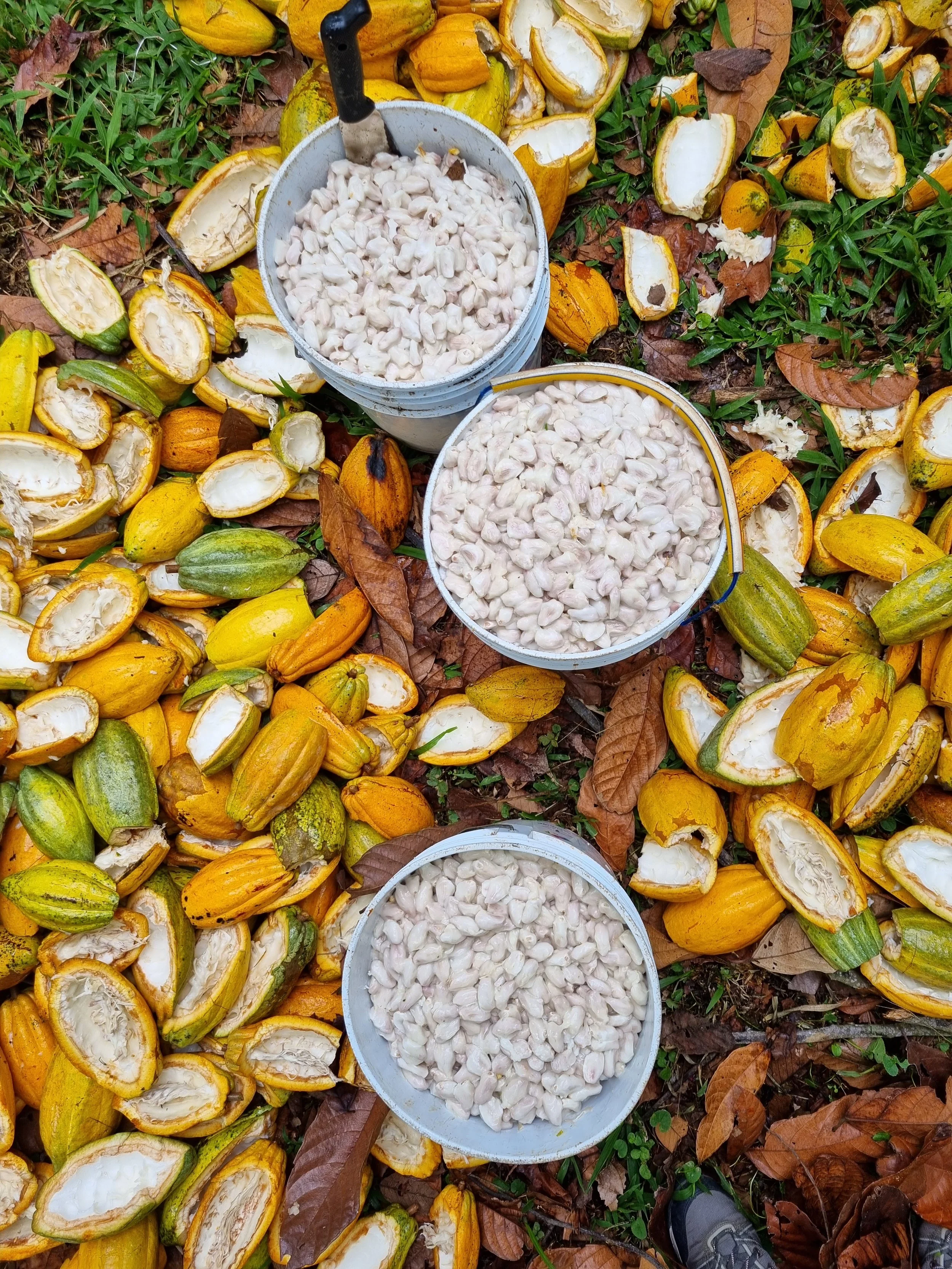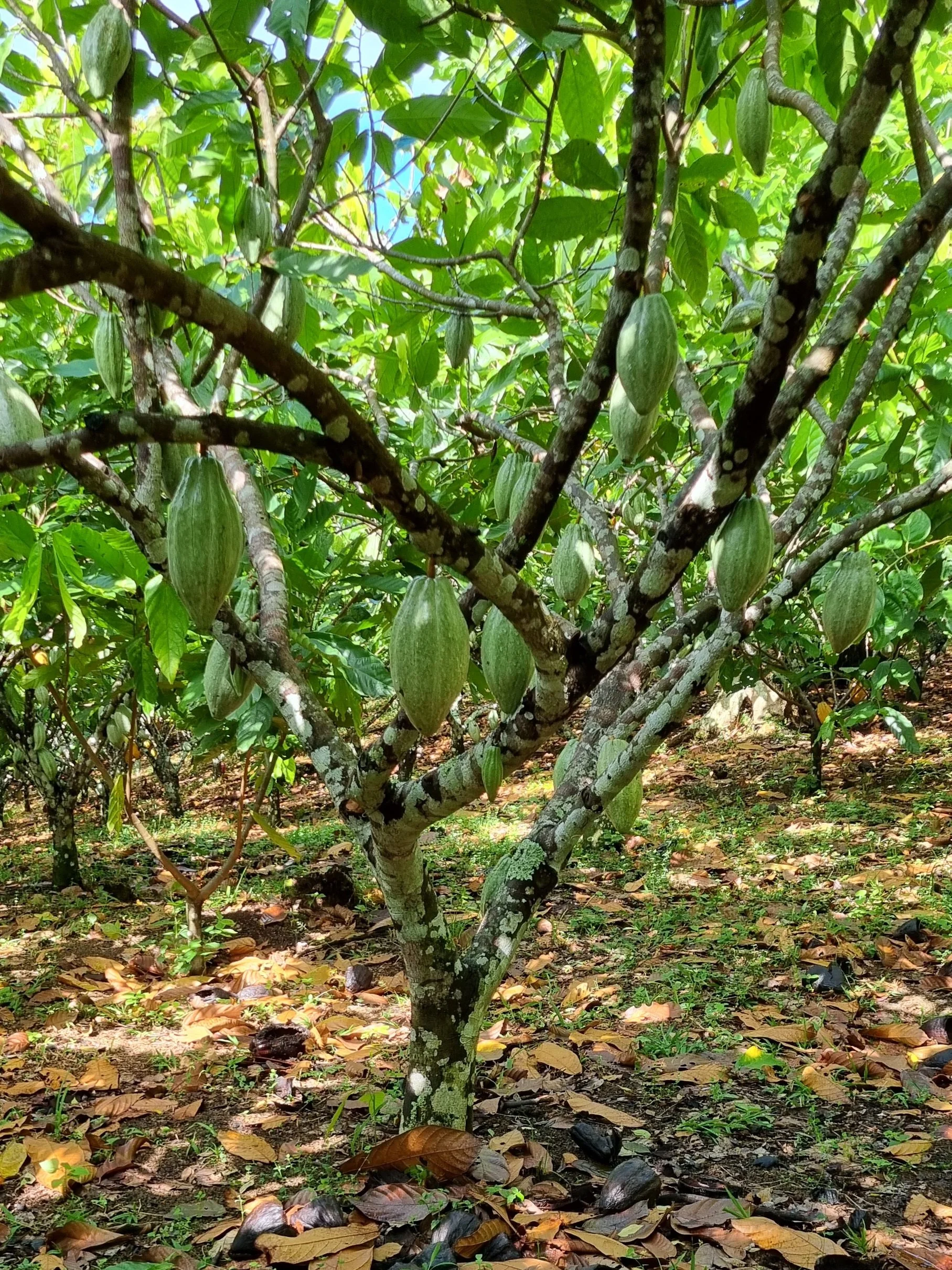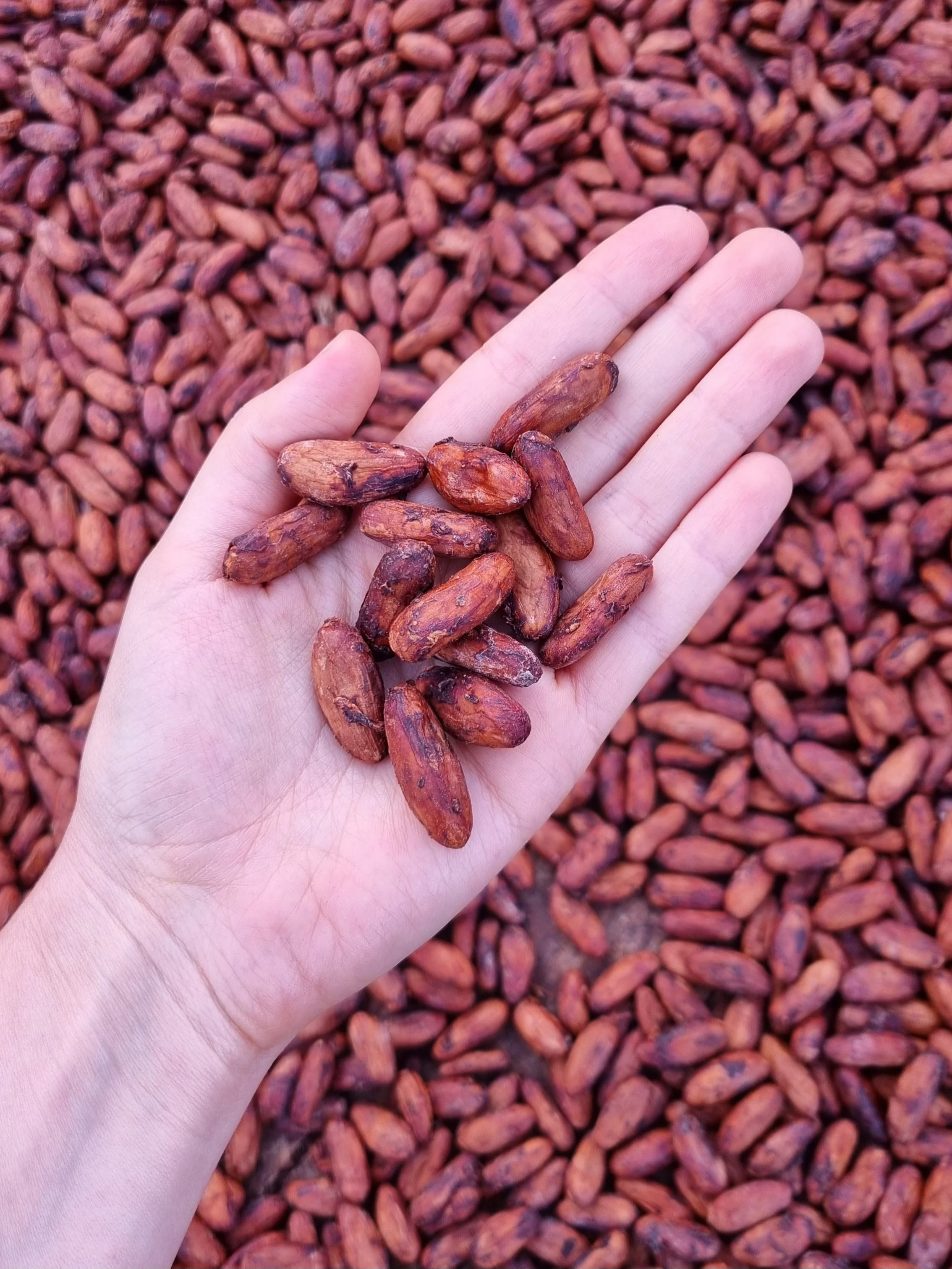The Basics of Organic Cacao Farming
While walking the aisles of the supermarket, an increasing number of consumers demand their chocolate to be organic.
The global organic chocolate market was valued at USD 0.55 billion in 2022 and is expected to grow at an annual average rate of 6.8% until 2028.
But do chocolate lovers even know what organic farming means for farmers on the other side of the world?
Let’s dive deep into the basics of organic cacao farming.
What Does Organic Farming Generally Mean?
Often addressed as “an holistic approach to farming”, organic farming has ONE GOAL: creating a production system that is socially, economically and environmentally sustainable in the long term. For example, in the case of cacao, this means producing the highest quantity of cacao possible with farming practices that won’t be detrimental for the environmental and the people involved.
To achieve this goal, the main tool of organic farming is the elimination of synthetic pesticides, fertilizers or herbicides. Any man-made and artificial enhancer is banned from organic farming in favor of all-natural fertilizers produced right in the farm. This is why professionals talk about switching from external inputs (buying synthetic and expensive fertilizers from companies) to internal inputs (creating organic fertilizers right in the farm), where the farm becomes a self-sufficient and regenerative entity that also produces economical value.
But why are chemical fertilizers and pest controls a problem?
Commercial synthetic fertilizers upset the entire ecosystems where they are applied, and even spread beyond to other neighboring lands.
From killing pest predators and being poisonous to animals and humans, to polluting the water supply and unbalancing the nutrients in the soil, they cause all sorts of damages in the long run. Furthermore, chemical fertilizers/herbicides/pesticides are expensive and make farmers dependent on agro-chemical companies for their crop and the surviving of their farm.
The second best tool of organic farming is AGROFORESTRY: a mix of different plants live in the same space, helping each other thrive, exchanging nutrients and keeping the entire environment balanced and healthy. The fauna and flora biodiversity protects the crop trees from extreme weather, while improving the habitat for pollinators and enriching the soil with nutrients, resulting in an overall higher production compared to monocultures.
In regards to cacao, let’s see what the specific benefits of organic cacao farming are.
What Are the Benefits of Organic Cacao Farming?
the FERTILITY of the soil IS PRESERVED
Organic farming is known for keeping the soil healthy, porous (not too dry, not too compact) and with the sufficient (but not excessive) amount of bioavailable nutrients. In a healthy soil, nutrients can easily go around, be exchanged and reach all plants. For example, leguminous trees are known for providing cacao trees with substantial levels of nitrogen. On the other side, synthetic fertilizers are known for being a boost of productivity in the short term, but real soil killers in the long run.
CACAO DISEASES AND PESTS ARE LESS LIKELY TO SPREAD
With the implementation of organic practices, most phytosanitary (plant health) related problems on the farm diminish: infected fruits are regularly removed, humidity is kept under control, rain can properly drain and doesn’t stagnate, trees are fed all the proper nutrients and are kept strong in a thriving environment, so they are more resistant to typical diseases and pests like moniliasis, witches’ broom and black pod.
deforestation is avoided
With a healthy soil and thriving plants, farmers don’t feel the need to expand to new lands. They optimize the land they already have, instead of quickly depleting it and moving on to the next plot to deforest. Organic farming practices improve the yields of the existing cacao trees in an environmentally-friendly way. Farmers can decide to replace old trees or reabilitate the ones that have the potential to be more productive. Rather than cutting down surrounding forests to expand their farms, organic farming encourages the preservation and optimization of the existing trees rather than their abandonment.
organic material available locally is upcycled
Many consumers don’t know that chemical pesticides/herbicides/fertilizers are actually very expensive for farmers. Organic farming translates to less reliance on products sold by big companies in favor of self-sufficiency. Farmers learn how to create their own organic material from scratch with what they already have available on the farm and what they can gather from neighboring farms: animals manure, dried cacao husks, vermicompost, charcoal, bone meal, wood ashes and more. Waste material becomes organic fertilizer.
organic cacao is in high demand and paid at a premium PRICE
Although an organic certification (which doesn’t come for free) is usually required, avoiding chemicals is rewarded in the long run with higher prices compared to market standards. With the increasing demand from chocolate consumers, chocolate manufacturers are pressuring their cacao suppliers to grow organically. Since consumers expect to spend more for organic chocolate compared to non-organic chocolate, and are willing to do so for a more natural product, professionals don’t mind paying higher prices for cacao. Farmers’ income is therefore increased.
Now let’s look at the major practical activities that are implemented in an organic cacao farm.
How Is Organic Cacao Farming Actually Implemented?
production of Organic compost right on the farm
Producing organic compost from scratch requires some upfront investment, planning, and the creation of infrastructures and dedicated spaces inside the farm. Farmers can think of cultivating worms, buying manure from neighboring farms, collecting all organic material from the farm, creating spaces for amassing large quantities of humus, organizing a schedule for regular fertilizing sessions, and more.
development of an agroforestry system
Farming diversification is key for a successful organic farm. Farmers need to carefully select the best plants that can thrive together, especially to the benefit of cacao trees: upper shade trees, plants that make specific nutrients more available, trees that create the right shelter and water supply for cacao pollinators, others that shield the cacao trees from strong wind, some more that won’t take away nutrients with roots that are too large.
good farm management practices
The most popular organic farm management practices are:
underbrushing (taking weeds out from the bottom of the cacao tree)
sanitation (removing black/infested/infected pods)
pruning (giving and maintaining an optimal shape to the cacao tree)
shade management (remove or implement shade)
mulching (leaving the pruned material from the cacao trees and the cacao husks from harvest on the ground to improve soil fertility)
replacement or rehabilitation of underperforming trees
Instead of looking for new plots of land to plant trees, the goal of organic farming is to make the current lot of land as productive as possible, in the most sustainable and environmentally-friendly way. One of the major elements affecting cacao production around the world is aging trees and unproductive trees (under 25 pods x year). Organic cacao farming encourages practices like grafting and organic fertilization to either replace or reinvigorate the unproductive trees.
tailored methods for local conditions
Although the principles of organic farming apply to all cacao trees, they should always be revised and adapted to local conditions: ph of the soil, altitude of the farm, age of the trees, length of the rainy and dry seasons. Organic practices don’t only depend on natural conditions though, but should take into consideration also the human side. For example, what tools, training and finances are available to the farmers in a specific community, area or region?
Does Organic Farming Need a Certification?
Let’s be clear: an organic certification is a burden for cacao farmers.
A proper certification means expensive fees, documents to fill out, protocols to follow, new tools to acquire, training for employees, work routines to be changed, and more. This is why, even when farmers are already conducting all the organic practices that would fall under a certification, not all of them can or want to be certified.
Many cacao producers were and still are “organic by default” even without a third-party entity to certify it. This is because most farmers can’t even afford the high costs of using chemical pesticides and fertilizers. However, even the farmers that have only used organic practices because they couldn’t afford otherwise are switching to a more deliberate and intentional approach. They are investing time and resources because they recognize the benefits of organic farming for them, the cacao trees and the environment.
More and more farmers around the world are recognizing the importance of an organic certification and are trying their best to get one to expand their audience of potential clients.
An official organic certification doesn’t only imply rules, protocols and good practices for the soil and the trees, but also for the people involved. It includes the guarantee of employees’ rights like vacation time, sick days, work breaks, and legal contracts, and certifies that the cacao is entirely slave-free. The certification also touches points outside of the field, covering post-harvesting processes like specific protocols and rules for fermentation, drying and storing, together with rules for traceability (writing harvest year, batch number, net weight and more info on each bag).
Organic cacao farming is a win-win-win situation for the environment, the farmers and the consumers. But the challenges faced at origin should never be underestimated, neither taken for granted.






